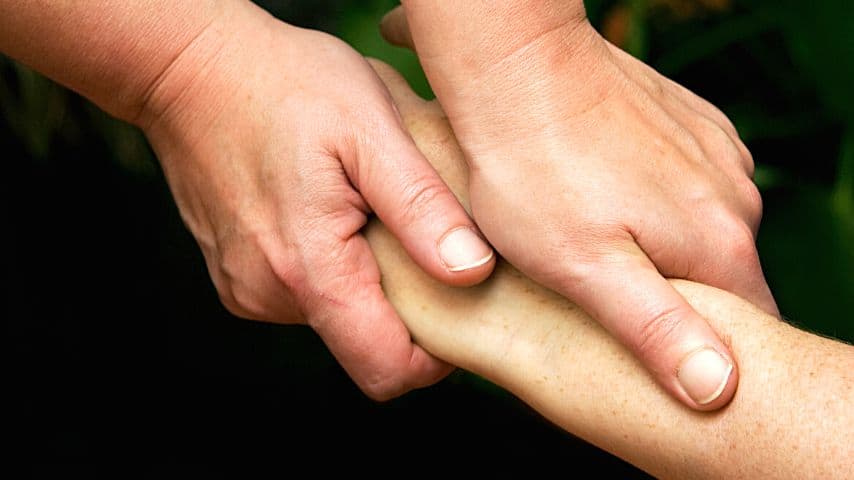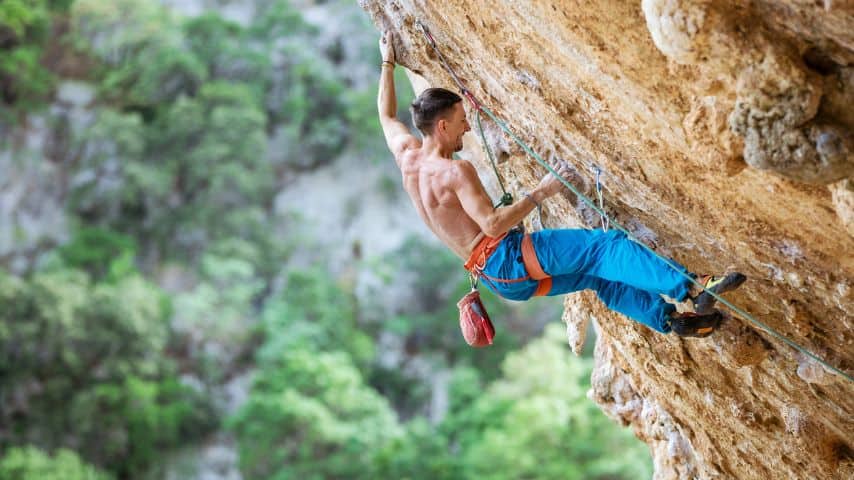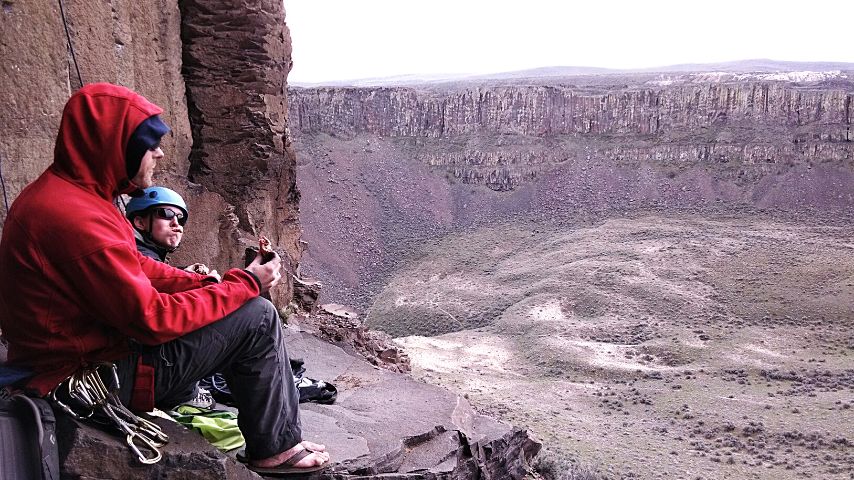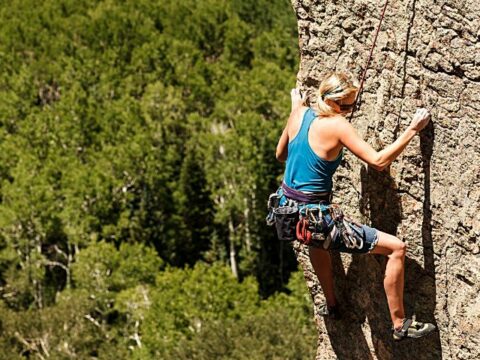Climbing is one of my favorite activities since it is terrific for your physical health and releases all of your happy chemicals. What else would I want?
But one thing that does bother me is getting pumped arms.
That pulsating, often painful sensation in your arm prevents you from continuing your climb.
If you climb, you’ll know what exactly I’m talking about!
Fortunately for us, there are ways to avoid getting pumped arms so you can enjoy climbing stress-free!
Table of Contents
How To Avoid Pumped Arms When Climbing?
If you experience pumped arms while climbing, take a break, breathe and shake your arms using the G-tox shakeout method. You can also massage them and keep a loose grip while climbing to prevent reoccurrence. Warming, stretching, hydration, and finding the right climbing pace also prevent pumped arms.
Do you know how to avoid pumped arms when climbing? Keep reading to learn more!
Ways to Recover Pumped Arms While Climbing
You are climbing, and suddenly you feel the pumped arms. So what should you do?
1. Take A Break And Breathe
So simple, yet so effective.
If you are lucky enough to get rest, do yourself a favor and take it! Let your arms get the blood flowing to them.
Take a break and breathe properly. Proper breathing will help deliver the oxygen to your muscles quicker to help them recover.

Take long and deep breaths. They help more than taking short and rapid ones.
And throughout the climbing, ensure to breathe properly as well. It helps prevent lactate build-up.
Not only will it recover your pumped arms, but it will also help you relax your mind before you continue your adventure. And it will delay any upcoming swelling in your forearms.
2. Shake Your Arms
This is quite a common way of recovering from pumped arms.
But how does it help?
Shaking your arms helps your body get the blood flowing through the forearms again.
Since your arms are above your head most of the time, they don’t get much blood flow.
Letting your arms down and shaking them helps the gravity do its job and get the blood flow where it needs to be.
I suggest trying the G-Tox shakeout method as it speeds up the recovery.
The G-Tox Shakeout Method is similar to dangling arms. You alternate the position of your arms between the usual dangling position below the waist and above your head.
And you shake your arms for five seconds during each position.
This gets the circulation better and the recovery faster.
So shake the pumped arms out!
3. Massage Your Arms
Take a break and give your arms a well-deserved massage.
They have been helping you climb so far up — the least they deserve is a massage!
Massaging will help remove the lactate buildup in your forearms.

Rub, knead or punch your forearms — go crazy!
Not too crazy to hurt yourself, though.
You can push them against your knees as they can get rid of the lactate faster.
4. Loosen Your Grip
Notice how once you let your arms loose, the pumped arms get better?
Squeezing your hands too much can swell the muscles in your forearms. This reduces the blood from flowing through the arm.
So going forward, when you are holding on to the ledges, don’t hold too tight. Just enough so that you don’t fall.

Loosening your grip will prevent lactate from building up in your forearms, and instead, take it away from them.
Prevention Tips
Now that we know how to recover from pumped arms while you are climbing, let’s talk about what you should do to prevent it from happening at all.
After all, everyone knows prevention is always better than cure, right?
1. Improving Your Pace
The pace while climbing can be a significant factor in preventing pumped arms.
Finding a pace where you are moving quickly and efficiently without depriving your arms of oxygen is important.
Everyone has different paces depending on their technique, training, and genetics.
So, figure out the right climbing pace for you!
You will figure out the pace as you keep climbing — so don’t worry!
2. Warming Up
I don’t know about you, but sometimes I like to skip the warm-up and jump directly to the main thing — whether that is exercising or climbing.
But that isn’t what you should do.
Warming up gets your blood flowing and prepares your muscles for the long climbing journey.

Climbers can get ‘flash pumped’ if they don’t warm up before going on a challenging route.
Flash pumped is similar to getting a pumped arm but much more intense. It allows you to avoid climbing for the rest of the day.
Luckily, you can prevent it with a good warm-up before climbing.
I understand the feeling of not wanting to do it, but I have learned that it is crucial, and you should too!
3. Hydrate Yourself
Hydrating yourself is essential not only before climbing but also throughout your climb.
Dehydration leads to faster exhaustion and lactate buildup and also reduces your energy output.

Try to take sips of water during the climb, but make sure you are adequately hydrated before starting.
4. Stretching
Stretching, in general, is very healthy for your body as it improves blood flow and gets oxygen to your muscles.
Stretch before and after climbing to loosen up your tendons and muscles.
That way, your blood can flow freely through your entire body and your forearms, and it will help prevent the lactate.
Frequently Asked Questions about How to Avoid Pumped Arms When Climbing
Why do I get pumped arms so quickly during climbing?
Your grip may be too tight, or you might be scared. You may also not be accustomed to climbing. Follow the given tips, and you’re good to go.
Is it okay to climb every day?
Climbing every day is fine, but not for an extended period. Regular climbing can put you at risk of injury and may decrease your strength.

